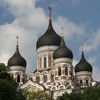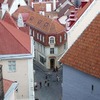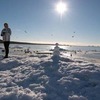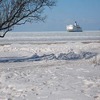Baltic Sea Commission takes Tallinn off polluted list
Eleven designated "hot spots" have been removed from the list of the Baltic Seas worst sources of pollution following a review of cleanup efforts, officials from the nine Baltic Sea coastal countries and the European Union announced in Vilnius today at the conclusion of a two day meeting.
The Heads of Delegation to the Helsinki Commission for the protection of the Baltic marine environment (HELCOM) met to develop the strategic Baltic Sea Action Plan, being created by HELCOM to restore the troubled marine environment of the shallow Baltic Sea.
Among the hot spots removed from the list is the Estonian capital city of Tallinn, as well as industrial plants and smaller municipalities in Estonia, Lithuania, Poland and Russia. These municipalities and industrial facilities have made improvements in updating their processes and pollution abatement technologies.
"This is a very welcome development, confirming the strong commitment of the HELCOM Member States to eliminate all hot spots in the Baltic Sea drainage area," said Chairman of the Helsinki Commission Arturas Daubaras of Lithuania.
"The remedial actions at the hot spots should be seen as one of the major steps towards achieving a cleaner marine environment," said Daubaras. He said ongoing remedial activities will be part of the strategic Baltic Sea Action Plan.
Among the hot spots deleted from the list are three municipalities in Estonia including the capital Tallinn, as well as Prnu and Paide.
Seven municipal wastewater treatment plants in St. Petersburg, Russia were removed from the list.
In Poland, a coking plant in Katowice has been taken off the list, as well as the metallurgical plant Duo-Stal in Bytom, as it has been closed.
In Lithuania, two municipalities - Klaipeda and Siauliai - have been removed from the list as well as three industrial hot spots, including the Amalg Azotaz fertilizer industry, the Panezys food factory, and the Klaipeda cardboard factory on the Lithuanian coast.
"We are witnessing very good progress in the reduction of pollution from point sources such as municipal wastewater treatment facilities, as well as industrial plants," said Kaj Forsius, professional secretary of HELCOM. "Wastewater treatment efficiency at the former hot spots now meets the requirements of the relevant HELCOM Recommendations."
The hot spots list of the most significant point sources of pollution around the Baltic Sea was first drawn up under the HELCOM Baltic Sea Joint Comprehensive Environmental Action Programme (JCP) in 1992.
The most notorious hot spots are point sources such as municipal facilities and industrial plants, but the program also covers pollution from agricultural areas and rural settlements, and sensitive areas such as coastal lagoons and wetlands where special environmental measures are needed.
The objective of the JCP is to facilitate the implementation of pollution reduction measures at the most polluted sites in the Baltic Sea drainage area.
The program, which is expected to be completed by 2012 at the latest, specifies a series of actions to be undertaken at pollution hot spots.
The environmental hot spots were designated in 1992 by an international group of scientists, engineers, environmental managers, bankers and national representatives, according to practical economic considerations as well as the seriousness of their impact on the environment and human health.
A total of 81 hot spots and sub-hot spots remain on the list today, following the deletion of 82 of the 163 originally identified.
Investment and remediation projects carried out at pollution hot spots around the Baltic Sea have contributed towards overall reductions in the pollution load entering the Baltic Sea catchment area.
Water quality in many coastal waters of the Baltic Sea has improved since 1992, reflecting progress in the treatment of municipal and industrial wastewater, the delegates agreed.
But although progress has been made at municipal and industrial hot spots, "continued and substantial additional support will be required to reach the targets of the program," they said.
HELCOM has already approved the core elements of Baltic Sea Strategic Action Plan, which the commission describes as a common vision of a healthy Baltic Sea and a set of strategic goals and ecological objectives for achieving a commonly acceptable good status of the marine environment.
The next step in the development of the plan will be to identify and detail the kind of actions needed to achieve the agreed environmental objectives within a given timeframe for each of the four main environmental priority issues - curbing eutrophication, preventing pollution involving hazardous substances, improving safety of navigation and accident response capacity, and halting habitat destruction and the decline in biodiversity.
A HELCOM Ministerial Meeting scheduled to take place on November 15, 2007 in Warsaw, Poland is scheduled to adopt the Baltic Sea Strategic Action Plan.
The chairmanship of the Helsinki Commission rotates between the nine Baltic Sea coastal countries and the EU every two years. The Vilnius meeting was the last under Lithuanias chairmanship of HELCOM.
On July 1, 2006, Poland will officially take over the chairmanship. A chairman, Mieczyslaw Ostojski from Poland's Environment Ministry will lead the work of HELCOM until June 30, 2008.





